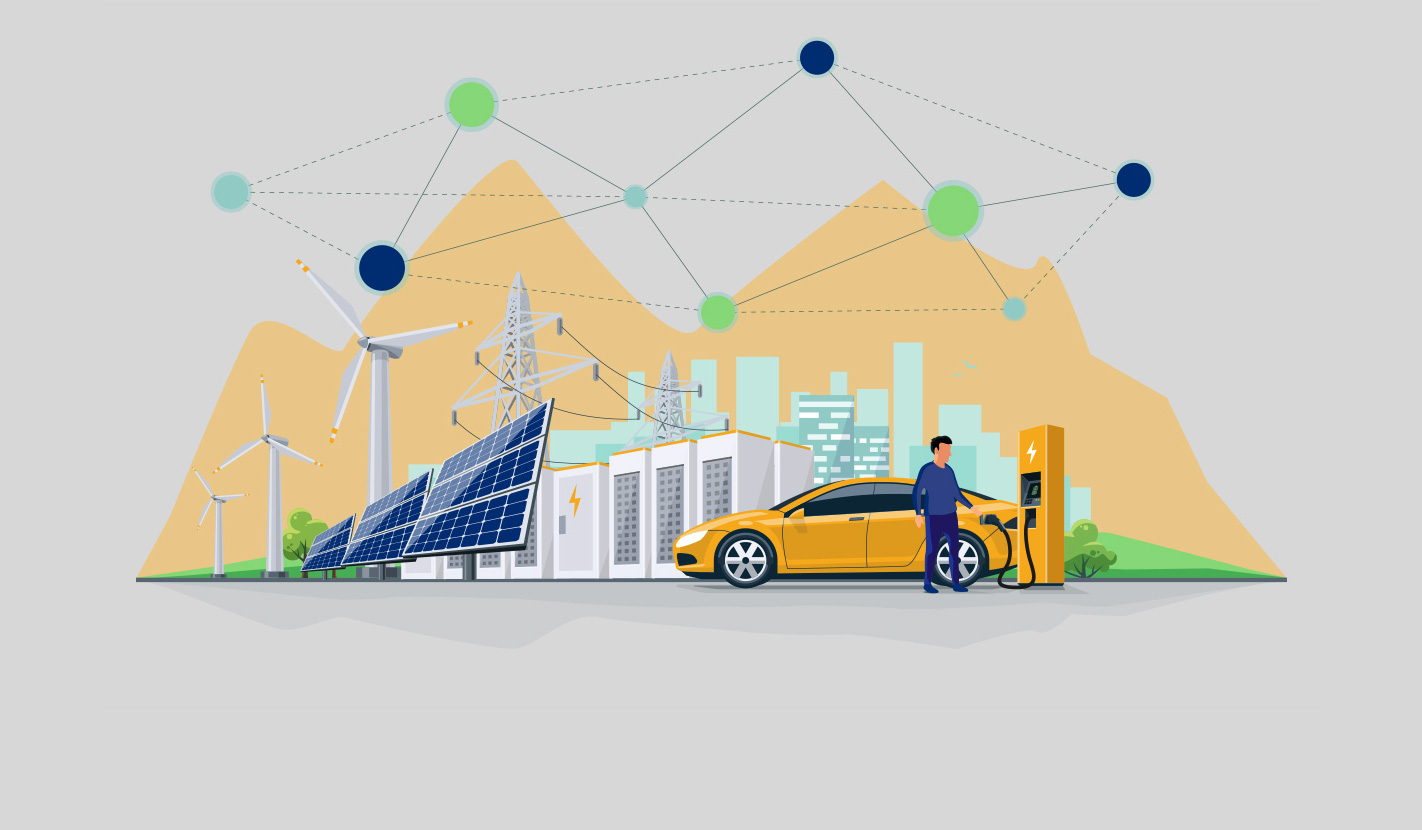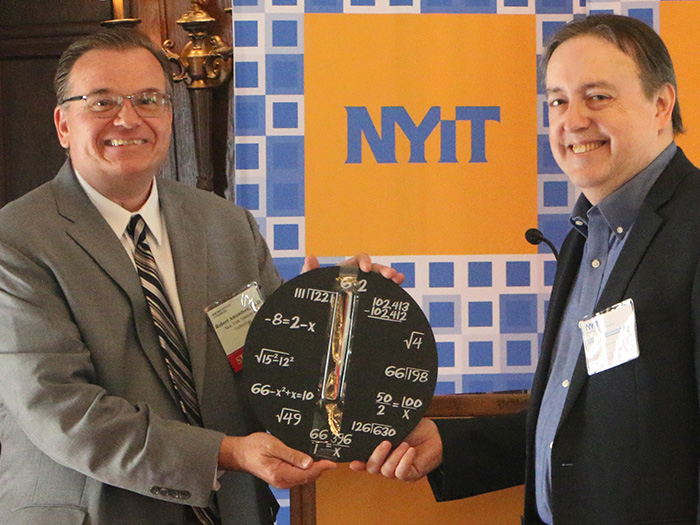
Power Grid Needs to Get “Smart,” Says Energy Expert
December 10, 2019
Arriving home after work in the evening is a time for re-charging—figuratively and literally. People who arrive home between 5 and 8 p.m. provoke a surge in electricity use, and that specific demand is part of an emerging problem in energy management, according to energy expert Joseph S. Lopes (M.S. ’19).
Lopes, senior principal consultant at DNV GL, addressed a group from the Long Island chapter of the Association of Energy Engineers (AEE) at “Disrupting the Energy Grid: How Solar Roofs, Electric Vehicles, and Learning Thermostats Will Disrupt the Traditional Operation of the Electric Grid,” at Anna Rubin Hall on the Long Island campus last month. He talked about the challenge disruptive new technologies pose to old-style power grids. “The traditional energy grid, with large ‘base-load’ generating stations, is not suited to the new ways power is being produced, regulated, and consumed,” he said.
The evidence of increasing stresses on the power distribution grid shows in the growing gap between daytime energy demand and a predictable evening surge. The resulting usage graph has been labeled “the Duck Curve” because it resembles a cartoon duck. (See illustration.)

This graph showing the gap between decreasing daytime demand and a steep demand surge at around 6 p.m. prompted the term “duck curve.”
Lopes focused his discussion on the following aggravators of the Duck Curve: solar panels on residential roofs; electric vehicles; and smart thermostats. These and similar technologies present challenges for power plant dispatchers as well as energy engineers because most power plants are not designed to suddenly shift from low output (during the daytime demand dip) to high output (in the evenings).
The daytime decline is partly a result of photovoltaic panels that serve as personal power plants on residential rooftops. These solar roofs are popular on Long Island, and the clean energy trend makes the swing in demand more severe because (obviously) solar power is generated only in the day.
Electric vehicles cause a problem for electricity load management because just as we are likely to re-charge our cell phones (and cell phone battery packs) in the evenings, people with electric vehicles want to re-charge their cars.
People often charge electric vehicles, as well as cell phones, during peak evening hours. The result of our many chargeable devices (especially as more electric vehicles come into use) is that a huge amount of energy produced in the old-fashioned way is consumed at the consumer’s whim, off the grid, often during off-peak hours. These “behind the meter” uses of electricity take power grid decisions away from providers and put it into the hands of less predictable consumers.

Associate Professor of Energy Management and AEE-LI Chapter President Robert Amundsen, Ph.D. (left), presented a gift to energy consultant Joseph S. Lopes (M.S. ’19) in June 2019. Lopes spoke last month at an AEE-LI gathering in Anna Rubin Hall.
Lopes suggested that demand for power during peak times may only diminish when electricity bills reflect consumers’ time of use. Utility companies should require premiums for peak electricity and grant discounts for off-peak usage, a type of system facilitated by smart meters. Until costs are affected, consumers won’t be motivated to adjust established habits.
Smart thermostats similarly exacerbate the daytime dip and the corresponding evening surge. When sensors and smartphone apps allow consumers to use less electricity when they are away from home, they pay less and feel great about helping the planet. At the same time, their rate of evening power consumption may stay steady or even grow. According to Lopes, a potential consequence of cutting consumption in the day, though, is that less agile base-load power plants are a poor option for power when daytime demand drops too far below the following evening peak levels.
In conclusion, Lopes urged the need for a “smart grid.” “The large, inflexible power system of yesterday needs to be converted to a ‘smart grid’ which responds quickly to changing conditions and provides incentives for consumers,” he said.
Lopes, who has more than 40 years of experience, saw changes emerging in the energy industry years ago and decided to pursue a master’s degree in Energy Management. He worked under program director Robert Amundsen, Ph.D., who also serves as president of AEE-Long Island.
“Disruption is both a threat and an opportunity for electric utilities,” says Amundsen. “They must adapt to the new landscape of technology-driven power demands.”
More Features

An Alumnus’ Commitment to the Environment
As an energy management graduate from New York Tech’s Vancouver campus, Jasdeep Gulati (M.S. ’22) is highly invested in educating people about environmental and climate sustainability.

Vancouver Faculty Win University-Sponsored Research Awards in New Program
The new Global Impact Research Grant (GIRG) program has been developed to keep Vancouver-based faculty connected to faculty and research projects being conducted on the university’s New York campuses.

Studying Climate Change One Degree at a Time
Junhua Qu (M.S. ’24) began her collegiate journey in Beijing. But, her interest in climate change took her to New York Tech’s Vancouver campus to study energy management.
